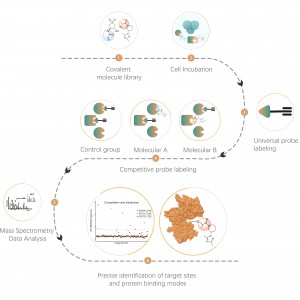
Products
Protein-Protein Interactions
Protein-protein interactions (PPIs) serve as the cornerstone of cellular life activities, playing crucial roles in cell signaling, structural assembly, and key life processes such as pathogen-host recognition. However, many pathological processes are also caused by abnormalities in PPIs. Therefore, intervening and regulating PPIs has shown tremendous potential as a means to treat related diseases.
ChomiX integrates a series of cutting-edge technology platforms, committed to working hand in hand with clients to uncover the complex and subtle network of protein-protein interactions. We provide comprehensive, multi-level technical support to help you make breakthrough progress in the field of proteomics.

Technical Service
1. Identification of Protein-Protein Interaction Networks in Cells
Proximity labeling (PL) technologies such as BioID, APEX, and TurboID utilize biotinylated enzymes or peroxidases to covalently label neighboring proteins in live cells. This allows for the isolation and identification of biotinylated proteins, i.e., interacting proteins. This method is particularly suitable for capturing transient or dynamic protein interactions, as well as interactions involving low-abundance or hydrophobic membrane proteins. Leveraging mass spectrometry technology, Chomix has developed a series of proximity labeling platforms to help you gain a deeper understanding of the complex biological processes within cells.
2. Identification of interaction regions for protein-protein and antibody-antigen interactions
In chemical cross-linking mass spectrometry, we employ linear cross-linkers with reactive functional groups that undergo covalent reactions with specific groups on proteins, such as primary amines and thiols. When two reactive amino acid side chains are in close proximity, they are covalently linked by the cross-linker. By using cross-linkers of different lengths and reactive groups, combined with protease digestion, we can obtain "cross-linked" peptides representing spatial interaction or neighboring regions. Through high-resolution mass spectrometry to analyze peptide sequence information, this technology has been successfully applied to obtain protein structural information and identify protein-protein interactions. Its advantages include low sample requirements, minimal environmental requirements, no molecular weight limitations, in situ cross-linking capability, simple operation, and rich information content. Chomix has developed a series of chemical cross-linking mass spectrometry technologies, enabling precise mapping of protein-protein and antibody-antigen interaction regions by flexibly using different combinations of chemical cross-linkers.



